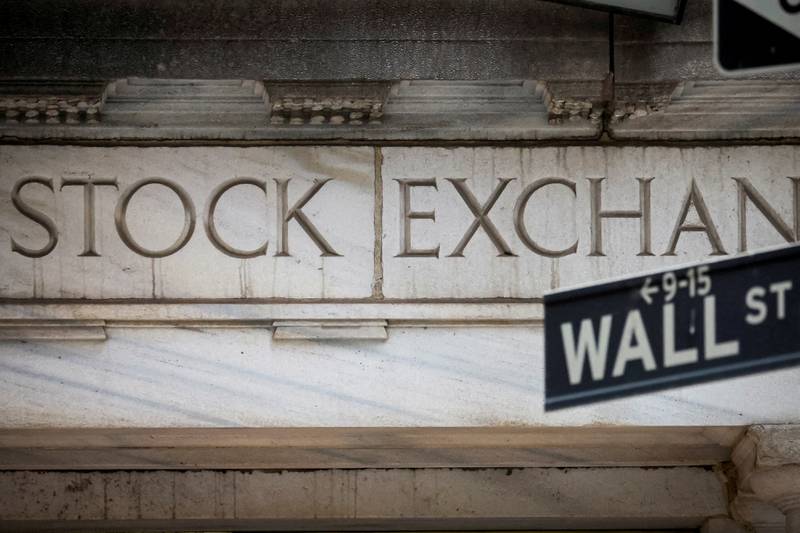US third-quarter GDP revised up to 3.2%

Collected Image
The US economy expanded 3.2 per cent in the third quarter, the Commerce Department said on Thursday, in a further upwards revision of data reflecting stronger consumer spending and investment than earlier estimated.
The world's biggest economy grew for the first time this year in the July to September period, after two quarters of contraction that worsened recession fears. Authorities earlier revised the GDP figure to 2.9 per cent, annualised — already an improvement from the 2.6 per cent first reported in October.
Both adjustments “primarily reflected upwards revisions to consumer spending” as well as non-residential fixed investment, the Commerce Department said, in its final GDP estimate for the quarter.
But growth was partly offset by decreases in residential fixed investment and private inventory investment, it added.
Within consumer spending, a rise in services was partly held back by a drop in goods — sales of cars and auto parts lagged as did food and beverage purchases, as households grappled with soaring costs.
An increase in government spending was led by upticks in staff compensation and defence spending, the Commerce Department said.
The data also showed that personal consumption expenditures picked up 2.3 per cent, markedly higher than the 1.7 per cent previously estimated.
But it is unclear how long consumers will be able to keep up the current pace of spending. “Despite a rapid increase in interest rates, the economy is growing and importantly, households are still spending,” said Rubeela Farooqi of High Frequency Economics in a note.
The Federal Reserve has raised interest rates seven times this year in an attempt to tamp down decades-high inflation, walking a tightrope to try to cool the economy without triggering a recession.
While effects of the higher rates are rippling across sectors, consumer spending has proven more resilient than expected.
But analysts point to signs that households are dipping into their savings, predicting a slower growth path in the future.
“In 2023, we expect a slower growth trajectory,” said Ms Farooqi. “In terms of Fed policy, even as growth slows … a focus on lowering inflation means rates will remain higher for longer next year,” she said.
The world's biggest economy grew for the first time this year in the July to September period, after two quarters of contraction that worsened recession fears. Authorities earlier revised the GDP figure to 2.9 per cent, annualised — already an improvement from the 2.6 per cent first reported in October.
Both adjustments “primarily reflected upwards revisions to consumer spending” as well as non-residential fixed investment, the Commerce Department said, in its final GDP estimate for the quarter.
But growth was partly offset by decreases in residential fixed investment and private inventory investment, it added.
Within consumer spending, a rise in services was partly held back by a drop in goods — sales of cars and auto parts lagged as did food and beverage purchases, as households grappled with soaring costs.
An increase in government spending was led by upticks in staff compensation and defence spending, the Commerce Department said.
The data also showed that personal consumption expenditures picked up 2.3 per cent, markedly higher than the 1.7 per cent previously estimated.
But it is unclear how long consumers will be able to keep up the current pace of spending. “Despite a rapid increase in interest rates, the economy is growing and importantly, households are still spending,” said Rubeela Farooqi of High Frequency Economics in a note.
The Federal Reserve has raised interest rates seven times this year in an attempt to tamp down decades-high inflation, walking a tightrope to try to cool the economy without triggering a recession.
While effects of the higher rates are rippling across sectors, consumer spending has proven more resilient than expected.
But analysts point to signs that households are dipping into their savings, predicting a slower growth path in the future.
“In 2023, we expect a slower growth trajectory,” said Ms Farooqi. “In terms of Fed policy, even as growth slows … a focus on lowering inflation means rates will remain higher for longer next year,” she said.
Source: https://www.thenationalnews.com
Previous Story
- Microsoft-Activision deal: Gamers sue to stop merger
- U.S. rail workers say deal won't resolve quality-of-life...
- Crypto firm BlockFi files for bankruptcy after FTX...
- US Treasury Secretary Yellen looks to India for...
- Auto prices in U.S. finally begin to creep...
- Safanad and Global School Management to invest $200m...
- US Fed's Bullard content with big rate rises...
- Multilateral Clean Technology Fund gets $950m US Treasury...